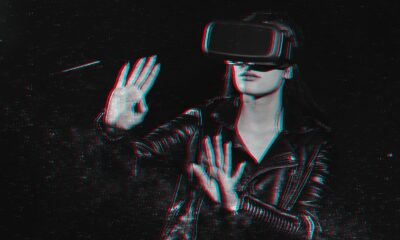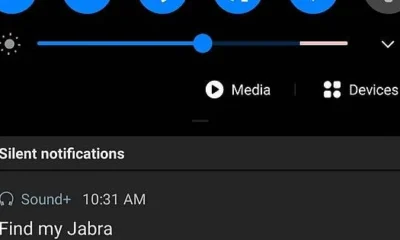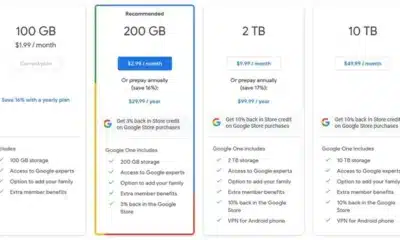Business
How Do You Make an AR Without Coding?

Augmented Reality (AR) and Virtual Reality (VR) are becoming mainstream again after a pause due to the pandemic. Technologies like Pokémon Go and Oculus are leading this resurgence, transforming how we interact and blurring the line between virtual and real.
You don’t need coding skills to create AR; simple tools allow even beginners to contribute. AR is poised to revolutionize our lives, both for fun and business. If you’re interested in learning more, you’re in the right place.
Does AR Require Coding?
People grew bored with text content at this age, and even attention-grabbing pictures and videos lost some of their magic. Today’s users are looking for the next thrill to devote their attention to.
It’s evident how social media platforms like Facebook, Instagram, and Snapchat constantly add new AR features. Furthermore, these companies give free access to their AR development tools.
For example, Facebook recently introduced its free AR creation tool, Spark AR Studio. Users can use these tools to make AR without coding experience.
If you browse social media at any time, you’ll also notice 360-degree videos. You may also come across personalized filters that enhance the AR effect that users post on their profiles.
AR hasn’t been more accessible than today, and the trend is growing fast. In addition to social media platforms, AR platforms also offer free and paid solutions to make AR.
These AR platforms are easy to use, whether for educational, business, or gaming purposes. You don’t need years of coding experience to use them. Anybody can create an account, upload some assets, and convert them to AR content.
These platforms even let users submit their AR apps to the Play Store on Google and the App Store on Apple. Furthermore, they allow users to create AR web apps.
Unfortunately, making complex AR uses a lot of hardware resources. Whether as a local user or a cloud computing platform, AR requires heavy graphic capabilities.
However, users with simple needs can make good AR that covers their needs. For example, a business owner can make a 3D representation for e-commerce products for free and without coding experience.
How Do You Make an AR Without Coding?

Making AR without coding requires possession of the right software tools. Together, they’ll make something like a photography studio but for AR. The software lays the comprehensive groundwork, allowing an easy start.
Also, these are Software Developer Kits (SDK) that contain the fundamental building blocks for anyone to make AR. You can use them to build AR apps, web applications, websites, presentations, etc.
Such SDKs are a set of tools anyone can use to make AR. Plus, they’re beginner-friendly, meaning you don’t need professional training.
However, there’s a learning curve to making world-class AR with complex features. Other than that, you can start now by deploying one of these platforms from giants like Google (ARCore) to launch your AR journey.
Free Augmented Reality Creators (Brief Reviews)
Vuforia Studio
Vuforia Studio is an AR software that nearly one million developers use every day. The software lets users make an AR experience through a selection of foolproof tools. Vuforia is also compatible with other AR platforms and builds for many devices.
It also supports Unity, one of the most popular game engines in the world. Furthermore, it has been in the AR space for a decade and continues to help experts and beginners to make AR without coding experience.
Highlights
Vuforia features a beginner-friendly interface that’s similar to drag-and-drop applications. Users can import their 2D content and convert it into 3D or AR in a few clicks.
Whether you want to create AR apps for your company or your clients, Vuforia conveniently simplifies the process.
Users also get access to tons of documentation to kick start their learning. In addition, you can find thousands of free and paid Vuforia tutorials on YouTube and online.
Expert developers praise Vuforia’s QR Code or Image Target feature as the most advanced among primary SDKs on the market. It means accurate object detection and helps minimize lag when viewing an object in real time.
Vuforia also offers some free sample projects for beginners to test and use. It’s easy to download those projects and edit them to suit your needs.
While there’s no need for coding experience, it’ll help you learn the basics to make advanced AR experiences. These sample projects will help users find their bearings and later even master the process.
Pros
- Educational resources
- Cross-platform capability
- Regular updates
- Free sample projects
Cons
- Paid add-ons
- Erroneous surface detection
UniteAR

UniteAR is an iBoson Innovations AR software suite, including AR App Creator. It comes in both free and paid versions. With UniteAR, users can create stunning AR experiences and publish them directly on the internet.
The software is web-based, which makes it easy to use. There’s no need to install additional apps to create AR content on your computer. Furthermore, it doesn’t require any programming background to use. Instead, the online editor lets users upload the content and create AR within minutes.
Highlights
The AR App Creator from UniteAR has a simple interface for total beginners. It’s an excellent alternative to SDK environments that might be slightly too advanced for the first-timers. Users can even make, view, and share their AR creations from the mobile app.
UniteAR doesn’t store any files on the user’s computer. Instead, it utilizes Cloud to great effect. So, users don’t need to put their resources for processing. Also, they don’t need to worry about installing and storing large files on their computers.
UniteAR also offers other products, including Image-Based AR, Ground-Plane AR, and WebAR scanner. These tools let users create immersive AR experiences without writing a single line of code. These tools are mostly free to use, as only their most advanced capabilities require purchasing.
Pros
- Mobile app
- Realistic 3D models
- No coding experience required
- Award-winning customer support
Cons
- Slow loading
- Account issues
Adobe Aero
Adobe Aero is the latest addition to the Adobe Creative Cloud family. By far, it’s the most straightforward path for AR enthusiasts to participate even without any coding experience.
Adobe Aero is available on iOS for iPad devices and a public beta for Mac and Windows computers. With this AR software, you can import your files from other Adobe programs like Photoshop and convert them into AR experiences. As such, this app is greatly recommended.
It’ll also let you import files from other apps like Cinema 4D. Furthermore, you can export your AR files in many formats for publishing on the web. In short, the Adobe Aero offers complete convenience of use.
With it, you won’t need to install advanced software or sift through tons of documentation. You only need to install one program and get to making AR.
Highlights
Aero lets users skip the coding stage and jump straight into the design and creation. So, you can create 2D assets using Photoshop and convert them into 3D assets in Aero. After that, you can set up the scene, animate objects, and add dimensions.
Beginners can also base their projects on ready-made assets. They can even turn photos from their camera roll into 3D objects. If you want to see how a piece of furniture would look in your living room, Aero is the way to go.
Beyond the basic stuff, you can visualize maps, build AR apps and websites, or project holograms. The applications of AR come in full effect when using tools like Adobe Aero. It’s also one of the newest AR creators on the market, with a lot of room to grow.
Pros
- 24/7 live support
- Free iOS app
- Seamless integration with other Adobe products
- Easy to set up and use
- Beginner-friendly
Cons
- May have limited compatibility for Android
- It isn’t available on Linux computers
How Much Does It Cost to Create AR?

There’s no definite answer to the costs of AR, only estimations. The costs of AR apps and experiences depend on the complexity of a given project.
At the same time, you can use a free AR platform to build simplistic AR experiences without any costs. However, as you add more features and effects, the prices increase. If you hire an AR development agency, it may charge you anywhere between a few hundred to thousands of dollars.
Even a demo may cost you a substantial sum of money. The estimations don’t consider that challenges do come up in AR development. Hence, the experience and knowledge to tackle these unexpected problems don’t come for free either.
There are two types of AR apps, marker-based and markerless apps. Marker-based apps depend on ready-made assets since they only convert them to the AR format.
Later, they use a scannable “marker” to view the AR content in the real world. These apps are easy to make within three months. They cost around $1,000 – $2,000 at the very least, but this is subject to change regarding their complexity.
On the other hand, markerless AR apps are much more advanced. They use simultaneous localization and mapping technology for implementation. Usually, they use advanced SDKs and software to make AR. SLAM-based AR doesn’t need markers as they build a virtual environment.
So, they “layer” on the physical location from scratch. They also depend on position tracking and surface recognition features to visualize 3D objects.
Apart from such AR tech, licensing might also become another costly addition to the bottom line. Licensing lets companies own the rights to their AR, so others can’t access and edit them.
The wider you distribute your AR content, the more you’ll need to license it to prevent unauthorized use. Usually, licenses come in monthly payments that range between $100 and $2,000.
Conclusion
Today, the future of AR seems bright due to the steady flow of advancements. We haven’t even scratched the surface of what this technology can do.
Yet, we’re already seeing potential in many fields like healthcare, marketing, and entertainment. These industries figured out how to bank on AR even at its infancy. As it stands, things will surely get even better.
For now, we know for sure that early adopters of AR will reap the benefits in the coming years.
As you can tell by now, developing AR is within reach even for inexperienced users. There’s no coding experience needed nor usage of sophisticated tools. Hence, anyone can do it.
However, the low barrier of entry shouldn’t seduce you. Making AR is still a craft that requires knowledge and skills.
So, even though you don’t need coding experience, you might need to learn design basics. Plus, you’ll also need a healthy dose of creativity to make AR. The sheers plethora of options at your disposal demands you flex those muscles to the fullest.
In conclusion, anybody can make AR if they want. The tools are available for free. Tons of free tutorials and documentation are available for free as well. So, there’s no reason not to pursue this up-and-coming industry. Whatever your goals, you can do it.
-

 Gadgets6 months ago
Gadgets6 months agoCan Dogs Use VR Headsets?
-

 Tech6 months ago
Tech6 months agoWhat Does “Voicemail Pending” Mean?
-

 Phones5 months ago
Phones5 months agoHow Do I Know if My Phone Supports AR?
-

 Tech5 months ago
Tech5 months agoDoes Astigmatism Affect Your VR Experience?
-

 Phones5 months ago
Phones5 months agoWhat To Do About That Weird Notification Sound on Android?
-

 Tech4 months ago
Tech4 months agoHow Can I Get Google Drive 1TB for Free?
-

 Phones4 months ago
Phones4 months agoHow Does SnapDrop Work? – Instant File Sharing Made Easy
-

 Tips and Tricks4 months ago
Tips and Tricks4 months agoCan You Use Windows VR for Sculpting?



















